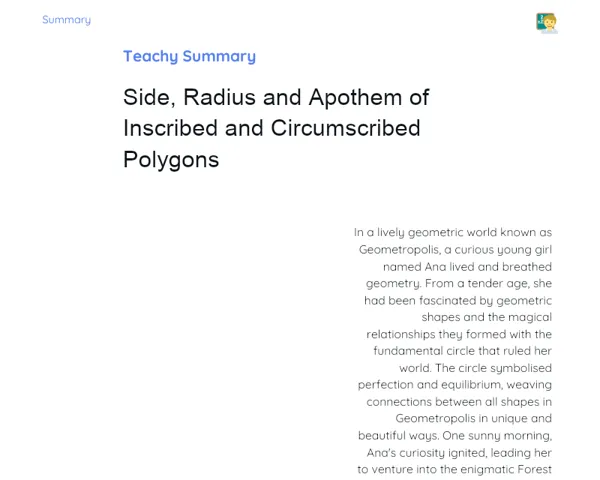Summary Tradisional | Conditional Probability
Contextualization
Conditional probability is a fundamental concept in mathematics that helps us comprehend how the occurrence of one event can affect the likelihood of another event. Put simply, conditional probability determines the chances of event A occurring, given that event B has already taken place. This concept is denoted by P(A|B), where P(A|B) indicates the probability of A occurring under the condition that B has happened.
To highlight the significance of conditional probability, think about a real-world example: when diagnosing a disease, doctors frequently rely on conditional probability to establish the likelihood that a patient has a specific illness, based on the symptoms presented. In a similar vein, in the realm of artificial intelligence, conditional probability is utilised in recommendation systems, like those found on music and movie streaming platforms, to anticipate user preferences based on historical data. These instances showcase how conditional probability is commonly applied across various fields, making it an indispensable tool for informed decision-making.
To Remember!
Definition of Conditional Probability
Conditional probability refers to the chances of event A happening, given that event B has already occurred. Mathematically, it's represented by P(A|B), where P(A|B) signifies the likelihood of A occurring under the circumstance that B has transpired. This notion is vital in diverse fields as it enables us to adjust the probability of an event based on extra information.
The core formula for calculating conditional probability is P(A|B) = P(A ∩ B) / P(B). Here, P(A ∩ B) denotes the probability of both events A and B happening at the same time, while P(B) represents the probability of event B. This calculation modifies the probability of A by acknowledging that B has already taken place, yielding a more accurate understanding of the situation.
Grasping conditional probability is crucial, as many events in the real world are interconnected. For instance, the chances of a patient having a particular disease can substantially increase if they display certain symptoms. Therefore, conditional probability enables medical professionals and others to make more educated choices based on supplementary data.
-
Conditional probability is denoted by P(A|B)
-
The formula is P(A|B) = P(A ∩ B) / P(B)
-
Essential for understanding how events are linked
Formula of Conditional Probability
The formula for conditional probability P(A|B) = P(A ∩ B) / P(B) is critical for determining the probability of event A occurring, given that event B has taken place. The key to understanding this formula lies in correctly interpreting the terms involved: P(A ∩ B) and P(B).
P(A ∩ B) signifies the probability of both events A and B occurring simultaneously. This is significant because the likelihood of A needs to be altered to account for the fact that B has already transpired. P(B) is simply the probability of event B occurring. By dividing P(A ∩ B) by P(B), we adjust the likelihood of A to factor in this additional context.
This formula finds application in numerous fields, such as statistics, computer science, and medicine. For example, in a medical context, P(A) could represent the probability of a patient having an illness, while P(B) may refer to the likelihood of displaying a certain symptom. The formula then modifies the probability of having the illness (A) based on the presence of the symptom (B), yielding a more precise conditional probability.
-
P(A ∩ B) is the probability of both events happening
-
P(B) is the probability of event B
-
The formula adjusts the probability of A using the occurrence of B
Practical Example: Urn with Coloured Balls
A classic illustration of conditional probability involves drawing coloured balls from an urn. Imagine an urn has 3 red balls and 2 blue balls. We want to determine the probability of drawing a blue ball, knowing that the first ball drawn was red.
Firstly, we calculate the probability of selecting a red ball on the first draw: P(Red1) = 3/5. Next, considering that a red ball has been drawn, there are now 4 balls left in the urn, 2 of which are blue. The probability of drawing a blue ball on the second attempt, given that the first was red, is P(Blue2|Red1) = 2/4.
Thus, the conditional probability of selecting a blue ball, knowing that the first ball was red, is P(Blue2|Red1) = (3/5) * (2/4) = 3/10. This example demonstrates how conditional probability recalibrates the likelihood of an event based on additional insights.
-
First, calculate the probability of the first event
-
Then, adjust the probability of the second event based on the new context
-
A useful example to illustrate the application of the formula
Bayes' Theorem
Bayes' Theorem is an important extension of the concept of conditional probability. It provides a method to update probabilities as fresh information comes in. The formula for Bayes' Theorem is P(A|B) = [P(B|A) * P(A)] / P(B).
In this context, P(A|B) is the probability of A occurring, given that B occurred. P(B|A) is the probability of B happening, given that A took place, while P(A) and P(B) represent the individual probabilities of events A and B, respectively. Bayes' Theorem is particularly beneficial in situations that require us to reassess our estimates based on new evidence.
For instance, in a medical situation, P(A) might denote the probability of a patient having a disease before any tests, while P(B|A) could indicate the probability of a positive test result, given that the patient has the disease. By applying Bayes' Theorem, we can ascertain the probability that the patient has the disease after receiving a positive test result, thereby updating our estimate in light of the new information.
-
Bayes' Theorem updates probabilities in response to new information
-
The formula is P(A|B) = [P(B|A) * P(A)] / P(B)
-
Useful in scenarios where new evidence is continually emerging
Key Terms
-
Conditional Probability: The likelihood of an event happening, given that another event has already taken place.
-
P(A|B): Notation for the conditional probability of A given B.
-
P(A ∩ B): Probability of both events A and B happening.
-
Bayes' Theorem: Formula that allows for the updating of probabilities based on new evidence.
-
P(B|A): Probability of B occurring, given that A has occurred.
Important Conclusions
In this lesson, we delved into the concept of conditional probability, a key topic in mathematics and various fields of study. We discovered that conditional probability is the likelihood of event A occurring, given that event B has already occurred, using P(A|B) to represent it. The formula P(A|B) = P(A ∩ B) / P(B) enables us to calculate this adjusted probability, taking into account the occurrence of event B.
We also explored Bayes' Theorem, which is an extension of conditional probability and facilitates the updating of probabilities based on new information. This theorem proves particularly useful in contexts where data is continually refreshed, such as in healthcare and artificial intelligence. Real-life examples, like drawing balls from an urn and making medical diagnoses, helped demonstrate the application of these concepts in practice.
Understanding conditional probability is vital for making informed choices in diverse fields. It empowers us to evaluate the probability of events based on additional information, establishing itself as a valuable tool for professionals across various disciplines. We encourage you to explore more on the topic, as conditional probability has extensive and significant applications in the real world.
Study Tips
-
Review the practical examples covered in class and attempt to solve similar problems to bolster your understanding.
-
Look into additional resources, such as educational videos and mathematics literature, that cover conditional probability and Bayes' Theorem.
-
Practice solving conditional probability problems set in different contexts, like everyday situations, medicine, and artificial intelligence, to build confidence in applying these concepts.



